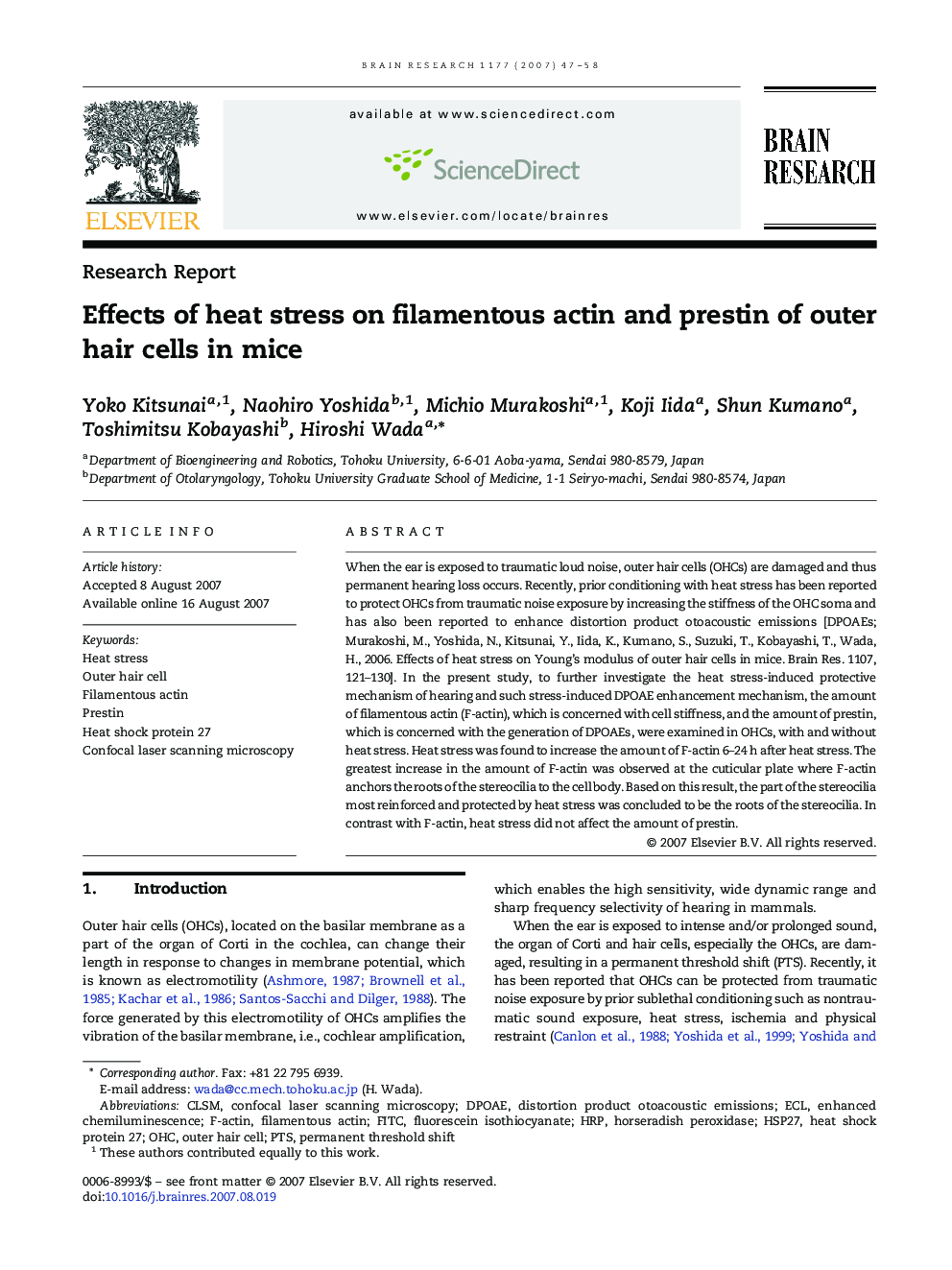| Article ID | Journal | Published Year | Pages | File Type |
|---|---|---|---|---|
| 4330637 | Brain Research | 2007 | 12 Pages |
When the ear is exposed to traumatic loud noise, outer hair cells (OHCs) are damaged and thus permanent hearing loss occurs. Recently, prior conditioning with heat stress has been reported to protect OHCs from traumatic noise exposure by increasing the stiffness of the OHC soma and has also been reported to enhance distortion product otoacoustic emissions [DPOAEs; Murakoshi, M., Yoshida, N., Kitsunai, Y., Iida, K., Kumano, S., Suzuki, T., Kobayashi, T., Wada, H., 2006. Effects of heat stress on Young's modulus of outer hair cells in mice. Brain Res. 1107, 121–130]. In the present study, to further investigate the heat stress-induced protective mechanism of hearing and such stress-induced DPOAE enhancement mechanism, the amount of filamentous actin (F-actin), which is concerned with cell stiffness, and the amount of prestin, which is concerned with the generation of DPOAEs, were examined in OHCs, with and without heat stress. Heat stress was found to increase the amount of F-actin 6–24 h after heat stress. The greatest increase in the amount of F-actin was observed at the cuticular plate where F-actin anchors the roots of the stereocilia to the cell body. Based on this result, the part of the stereocilia most reinforced and protected by heat stress was concluded to be the roots of the stereocilia. In contrast with F-actin, heat stress did not affect the amount of prestin.
